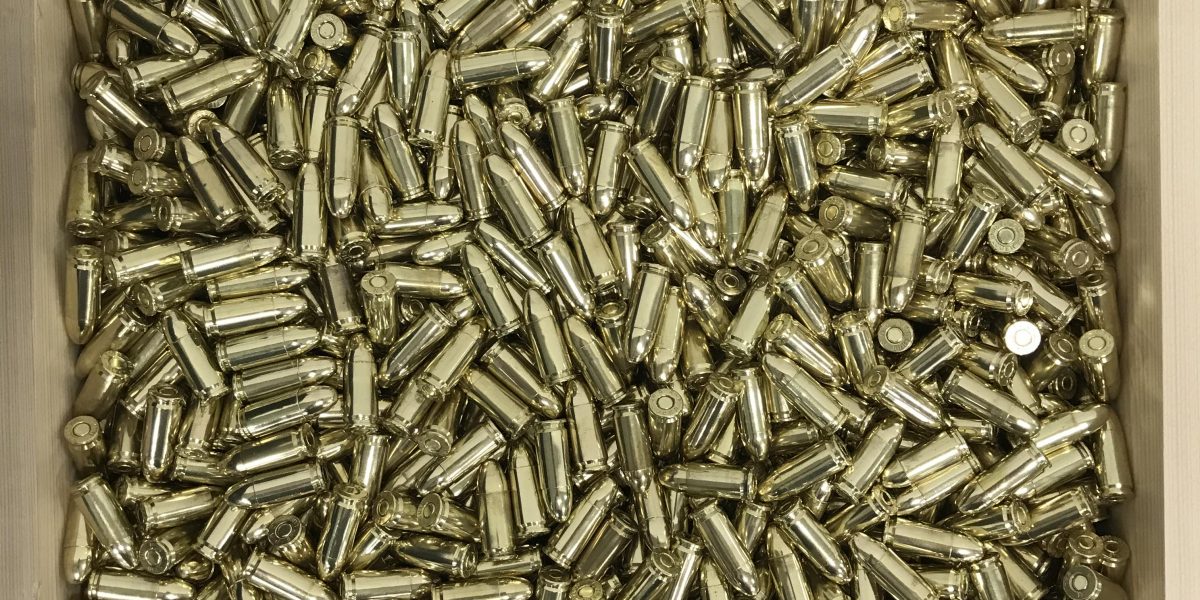Have you ever put any deep thought into the production of your favorite products? I like cheese but have you been to a dairy farm? Does not smell great. But what does smell great is burnt gunpowder. We’re going to discuss a little bit of how we do, what we do. Turning gunpowder into smiles.
Rainier Arms Firearms Academy knows that it is not easy to source and afford enough ammo to properly train. To accompany our ability to churn out great quality remanufactured ammo, we maintain a special tier of pricing for those that sign up for our classes. Economics shouldn’t factor into your ability to hone skills that are life saving and fun.
Remanufacturing 9mm has been our primary focus here in Wichita – helping to keep our shelves stocked and our range fed. We pride ourselves on not only our vast selection of products in store but also our available top of the line training. If you’d like a list of events and classes, you can take a look at the tab above. However, you can’t get any live-fire training without ammo, right? That’s where we come in. We have successfully maintained stock throughout the panic allowing all the new gun purchasers an opportunity to break in their firearm and take the appropriate classes. So, let’s break it down and talk about our process.
The first step is you! Thank you! When you come in and shoot, the brass that is left behind is collected at the end of every night. Our employees first ensure that the range is cold, so they can safely move behind the firing line.
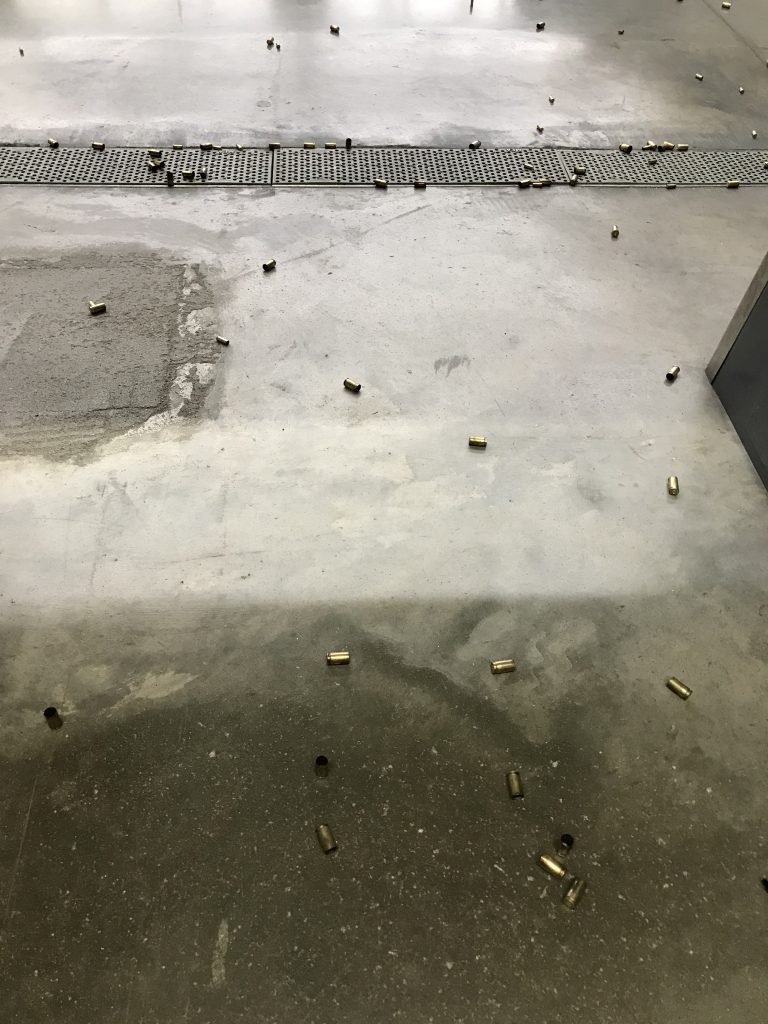
They clean the range’s floors and fix the rubber pile that catches the projectiles. This is the first step of our sorting process. Range staff are equipped with a sweet set up I wish I had in the army! I call it, The Police Caller 9000. First there’s a magnet that pulls all the gross steel we don’t want. They will also do they’re best to remove as much aluminum or any other weirdness we don’t want. Then a rolling device with rubber fingers is pushed across the ground. The fingers sorta grab casings and dump them into a basket.
Next the brass makes its way to us at the warehouse.
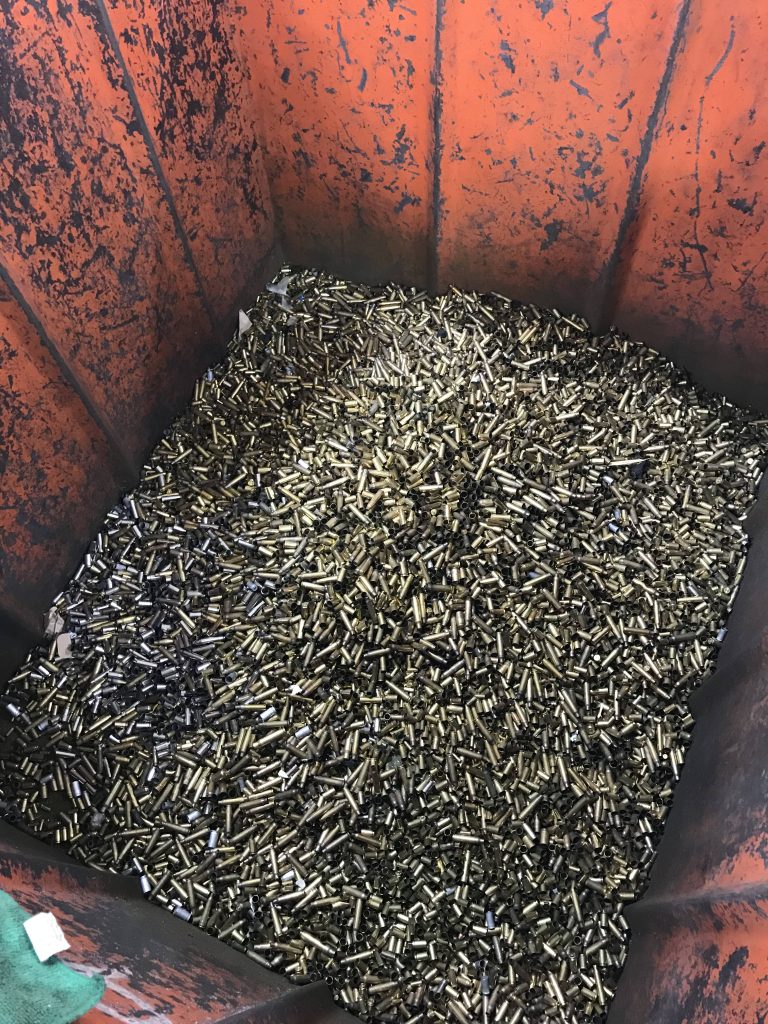
We have a vibratory sorter that sorts the casings by size. We keep what we want, and toss the rest into a big old scrap bucket to recycle later. We then take the 9mm casings and clean them up. All the soot and range dust make for a very abrasive, dirty, and rough loading experience. A cement mixer full of ground up walnut, with a little splash of polish gives us a cleaner flow through these machines.
Next is getting the casings ready to be loaded once again. First step is decapping. This is simply popping the old primer out. Next we swage the primer pocket. This ensures the pocket is clear of debris, and is sized appropriately to accept a new primer. We then resize/reshape the casing. During the firing process, brass expands and forms to your chamber. As it is pulled away in the extraction process, it may lengthen, and ultimately be misshapen. A resizing Die squeezes the brass back into spec.
The next machine is for loading the usable brass. We double check that the primer pocket is swaged properly, and clear of debris. Then we seat the primer. After checking the primer depth, we then move into belling the casing, and depositing the powder charge. Belling the casing is opening the mouth of the casing to allow a projectile to sit inside securely as it moves around the machine. The powder charge is also dropped in this station. The powder charge will be different with different load data, and powders. So make sure you’re using the right components. We have a sensor that then goes into the casing with powder in it. If the powder charge is incorrect, it will let us know by stopping the machine and giving us a prompt on the screen. A tube full of bullets drops one into the casing, and the weight from all the others taps it into place. This should secure the projectile in the casing. There are ball bearings in the tube, configured in such a way that it will only let one projectile fall when configured right. Our final station follows this. But the journey is not yet finished. (Unless you are like some remanufacturers I’ve seen) Seating and crimping, this stage is very important. Different projectiles will require to be seated differently depending on their length, and then the finished products overall length. This is a whole can of worms we can get into in another article later.
We’ve run our tests at the machine to ensure the bullets made are in spec, and safe for our customers, now they get a final cleaning. This time, with a less abrasive corn cob media. This removes any oils, or debris that occurred during the loading process. We do this for several reasons. First and foremost, reliability. Dirty ammo is just that. Dirty. Second, it looks better! I love the look of a bag full of our shiny bullets, and from what I hear so do others.
After a nice tumble polish, we take our bullets and hand inspect every one.
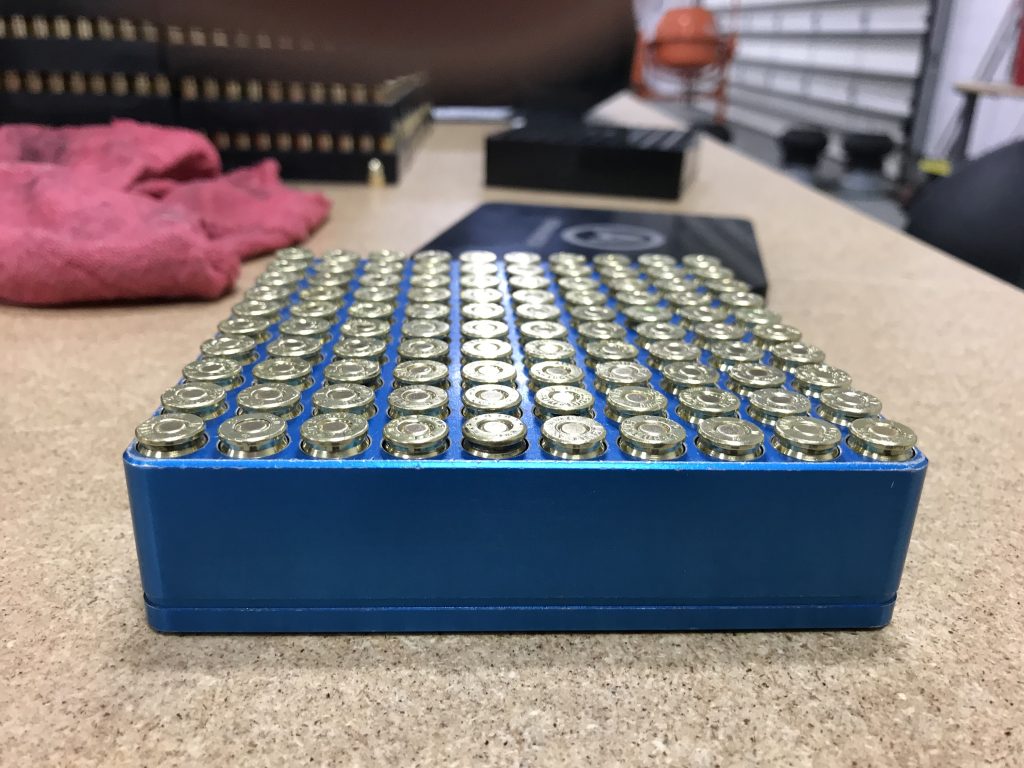
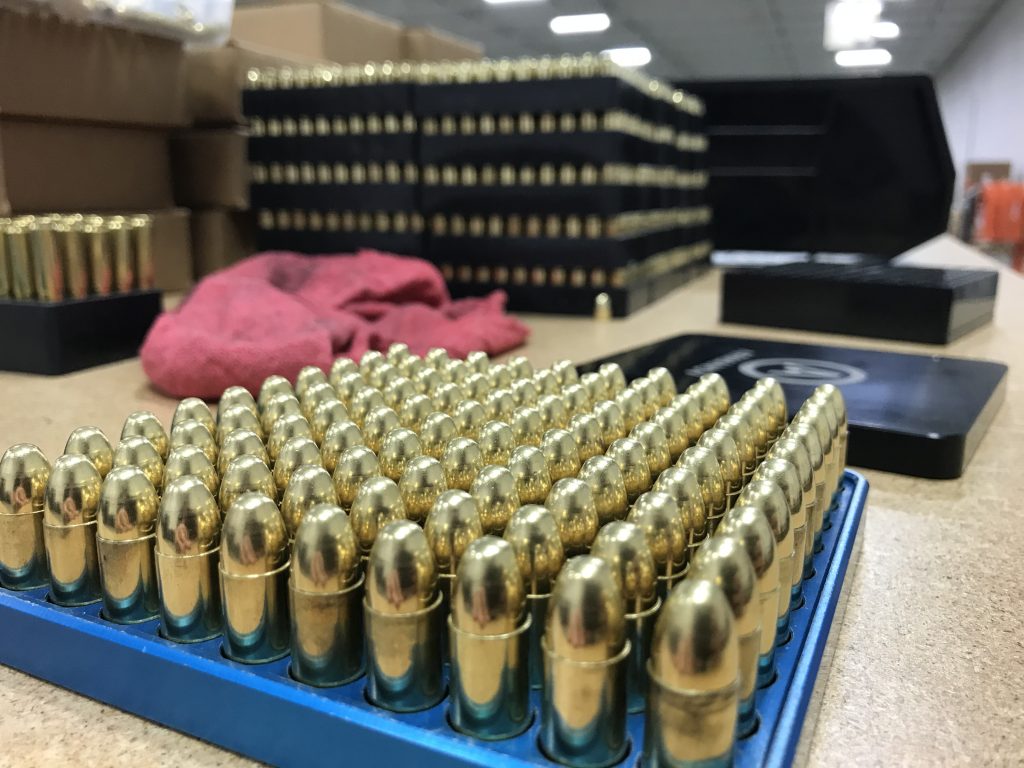
We have a gauge that is designed to be a very tight tolerance 9mm chamber. We drop the bullets into this to make sure they pass this check, then apply a plate that pushes them all up to show a consistent length. We will apply some pressure to ensure a bullet setback is unlikely.
Now depending on where this ammo is going, we package it. Retail sale we push out 250 round boxes. If we make 50 rounds for the range, we use a sealed bag. This brings our cost down, and that is a factor in our lower pricing for ammo at the range. One day I had dumped a 30 gallon trash bin that was full of the boxes and plastic containers that I had spent hours packaging up. Not only was this a whole lot of waste, just to transport a quantity of bullets from the range counter to the range, but a waste of everyone’s money. Save the fancy packaging for factory new, or special loads. We wanted a cost effective way to train, and I believe we are accomplishing that.
By: Ryne S

